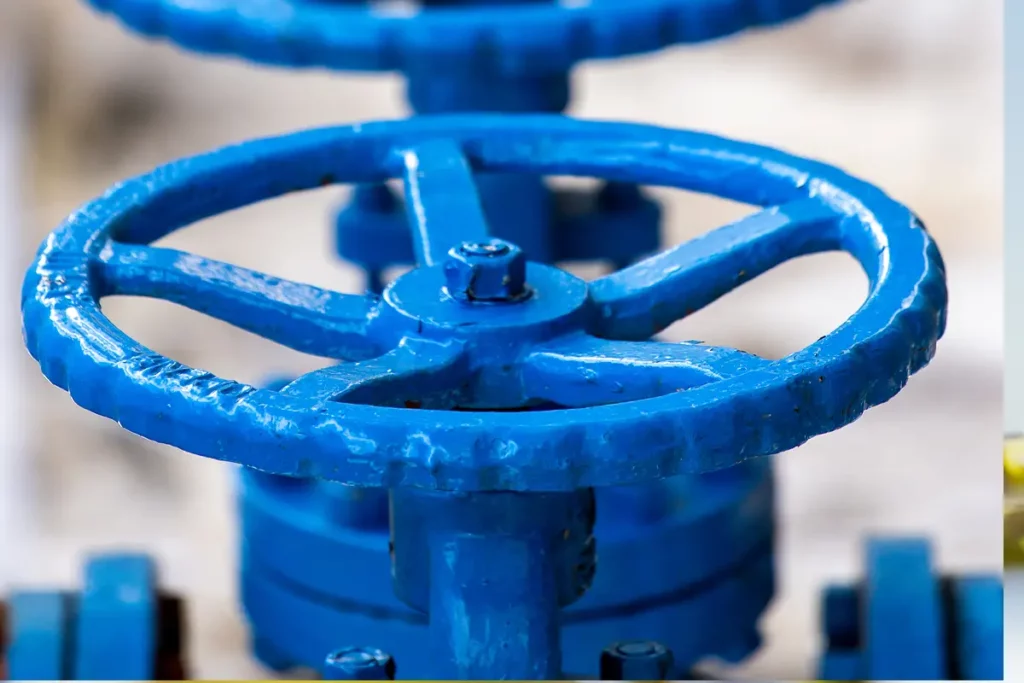Today’s plumbing systems are more complex than ever. From residential to agricultural and industrial, diverse setups can be used to meet any need – from saving water and energy to supplying hot water quickly without losing any efficiency. Still, these efficiency-first plumbings come with costs that seem never-ending.
By understanding the ‘nuts and bolts’ of valve systems you can save yourself time and money.
In this article, we will talk about the differences and advantages of gate valves vs. ball valves. You will find that these seemingly insignificant items can make a big difference in the grand scheme of things.
What Are Gate Valves?
Generally, gate valves are used to control the flow of liquids or gases through a piping system. When gate valves are opened, the gate is lifted from its seat and fluid passes through an internal passageway in either direction. There are several types of gate valves available in the market.
Brass Gate Valves
Brass gate valves are perfect for applications where corrosion is a major concern. Because it tolerates temperatures well, it is commonly used in manufacturing environments with high demands on equipment reliability!
PVC Gate Valves
Gate valves made of PVC are flexible, lightweight, and affordable. Cold water applications where high temperatures and pressures are not an issue, are best suited for them.
Stainless Steel Gate Valves
Because stainless steel is rust-free and has a low corrosion rate, it’s an excellent material for gate valves. The product won’t leach into water, so it can be used in areas where metal contamination may occur, such as your home’s drinking supply. In addition to the strength of stainless steel, this material also withstands human error and weather damage from tree roots, making it one of the most durable material options available!
Advantages and Disadvantages of Gate Valves
Gate valves are among the simplest and most reliable flow control devices available. They have no continuously moving parts to wear out, and all seals are contained within its body. Gate valves are a low-cost alternative for use in applications where emergency shutoff is not required, such as gas lines leading to residential appliances like furnaces and water heaters. Commonly used in process plants and water systems, the ability for the gate to be located completely out of the flow path when fully open or closed reduces flow resistance through the valve.
Gate Valves Advantages
- When fully open, gate valves offer little flow resistance which allows for minimal pressure drop as fluid travels through the valve, making them an excellent valve for systems requiring full flow when open.
- Gate valves can allow fluid flow in both directions, making them suitable for applications where the flow of fluid changes directions.
Gate Valves Disadvantages
- Because the gate and bonnet seals do not provide long term reliability for fluids containing solids, gate valves are not suitable for dirty or hazardous environments. Leaks at the packing box (stem sealing area) can also occur.
- Usually, liquid-handling gate valves need some form of stem lubrication, such as grease or oil (oil type gate valves).
What Are Ball Valves?
A ball valve is a type of quarter-turn valve that utilises a floating hollow spherical ball that is positioned between two ports (in and out) in the body of the valve. Fluids can flow in both directions when the hole in the ball is in line with the flow. When rotated 90-degrees by turning the valve handle, the ball closes and the flow of fluid through the valve flow stops.
A ball valve is often a better choice than a gate or globe valve for isolation applications because of their simple quarter turn operation and their sealing reliability even after many cycles. Additionally, ball valves perform consistently well in high-pressure environments, making them ideal for applications where durability is essential. As with gate valves, ball valves can be made from a wide variety of materials.
PVC Ball Valve
Ball valves made of PVC piping offer the affordability and flexibility of PVC, making it an attractive option for areas that are not subjected to high pressures or high temperatures.
Brass Ball Valve
Ball valves made of brass are perfect for applications requiring high temperatures. Despite being exposed to extreme temperatures, these items have proven to be extremely resilient in manufacturing settings.
Stainless Steel Ball Valve
Stainless steel is known for its strength and corrosion resistance, making these ball valves ideal for applications involving pressure or high temperatures. The material will not rust or corrode, so it can withstand harsh conditions such as water and chemicals!
Advantages and Disadvantages of Ball Valves
Ball valves are often used in applications that require quick operation where gate valves are not suitable. They do not require any internal lubrication whereas gate valves with liquids usually require lubrication of their stems.
In order for your plumbing project to be successful, you need to select the right valve. The best fit is determined by what kind of system it’s intended to be part of – whether it’s an irrigation line at home (which requires extended dwell times) or a component of a larger industrial system. You need a valve that will function properly.
Knowing the difference between gate valves and ball valves will help you make the correct decision. Choosing a ball or gate type will ensure that it will serve you well and won’t pose any problems in the future. If you are in two minds about which valve to select for your project, contact the experienced team at John Valves today to discuss.



